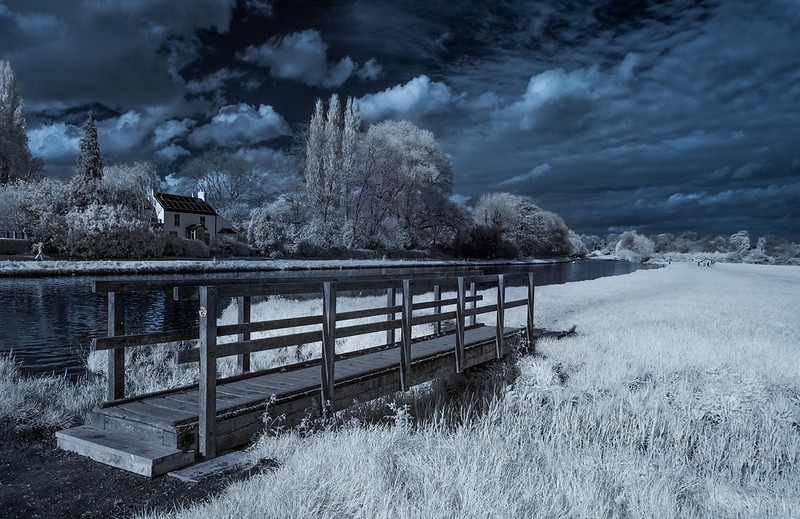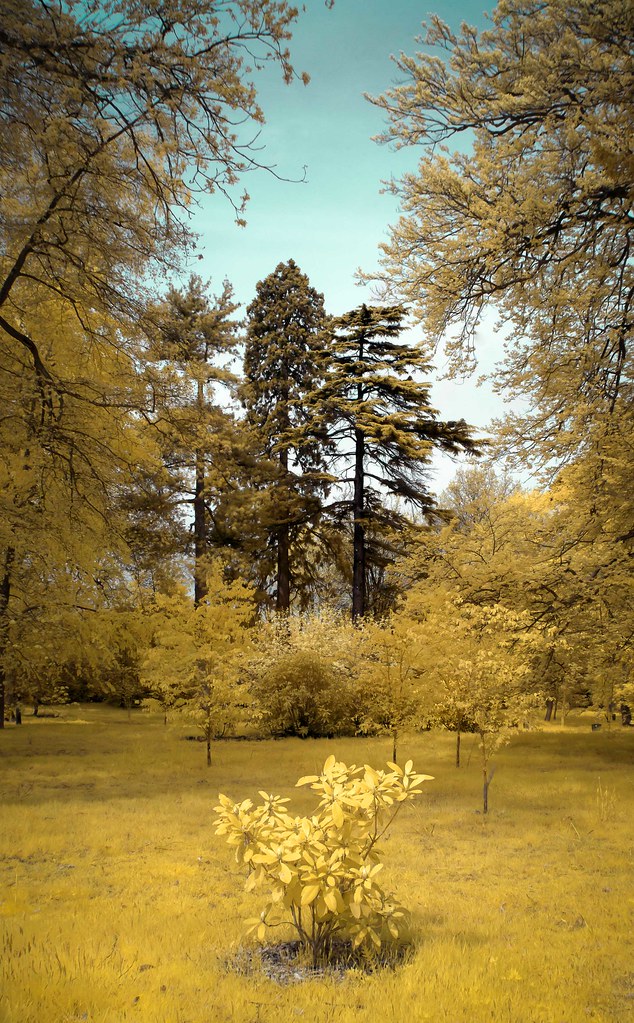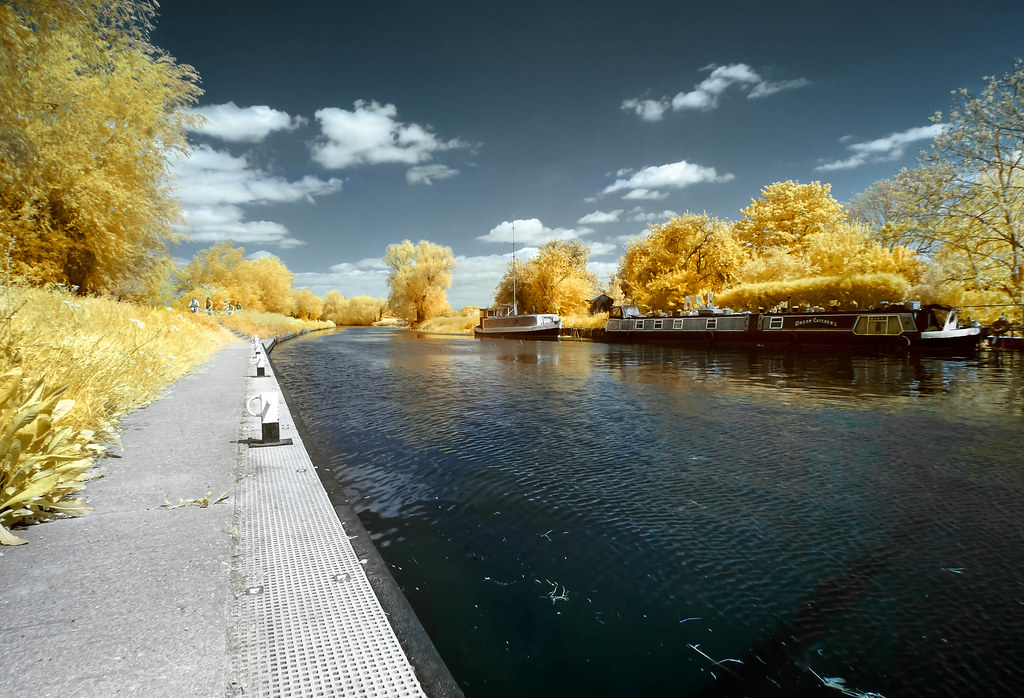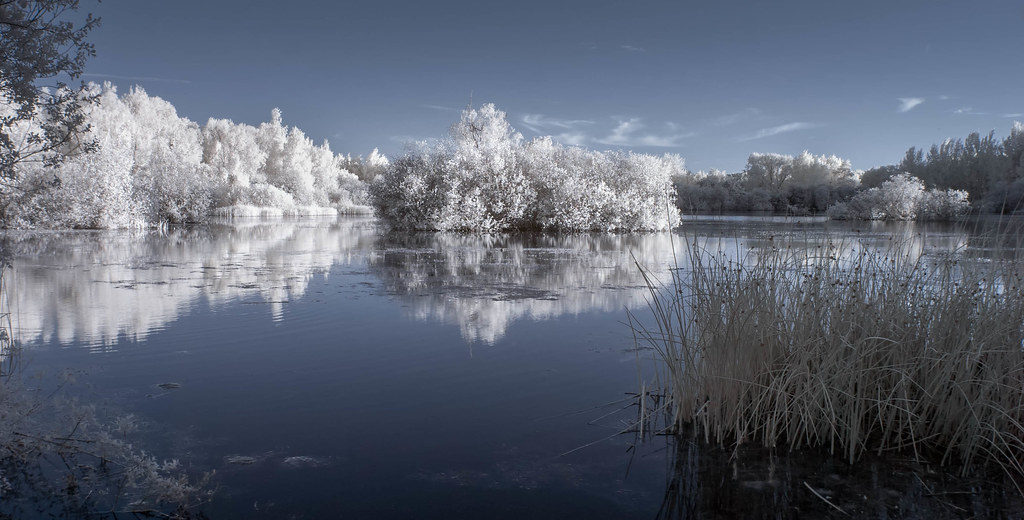Last year i dabbled with infrared photography, mostly with a little point and shoot lumix that i converted. This year i decided i wanted to jump in rather than dip a toe. I picked up a Good condition Nikon D80 (around 21k actuation's) for £55 and converted it to Infrared myself over the weekend

I don't have any photos of the project unfortunately, i was more concerned with not bricking the camera and cutting the new glass to the right size. I opted to replace the Internal Cut filter (hot mirror) with a Hoya UV filter (cut to size by hand
 ) instead of an IR pass filter. This way i can experiment with different Wavelengths and not be locked into one specific. I simply screw a filter onto the front of the lens
) instead of an IR pass filter. This way i can experiment with different Wavelengths and not be locked into one specific. I simply screw a filter onto the front of the lens
 . This does mean however that you see can't through the view finder to compose the shot. The camera will auto focus you just cant see on what.
. This does mean however that you see can't through the view finder to compose the shot. The camera will auto focus you just cant see on what.
Mod Completed and tested with few test shots i wandered out in Cambridge yesterday evening with an old 18-55 and my tokina 11-16 2.8.
I'm very much still learning the processing side of this type of photography but i thought i would share a few of my first processed shots Oh really big versions on Flickr Here
1) Tokina 11-16 2.8 - 1/200 f11 @ 16mm
This lens has a pretty dreadful hot spot issue for IR. Think i got it in post, can you spot it?

The Cam and Bridge by zeameth, on Flickr
2)Nikon 18-55 1/100 f9 @ 55mm

Kings College Chapel from the backs by zeameth, on Flickr
3)Nikon 18-55 1/40 f11 18mm

Kings College Entrance by zeameth, on Flickr
4) Nikon 18-55 1/100 f8 @ 18mm

Punts at the Mill Cambridge
by zeameth, on Flickr

I don't have any photos of the project unfortunately, i was more concerned with not bricking the camera and cutting the new glass to the right size. I opted to replace the Internal Cut filter (hot mirror) with a Hoya UV filter (cut to size by hand


Mod Completed and tested with few test shots i wandered out in Cambridge yesterday evening with an old 18-55 and my tokina 11-16 2.8.
I'm very much still learning the processing side of this type of photography but i thought i would share a few of my first processed shots Oh really big versions on Flickr Here
1) Tokina 11-16 2.8 - 1/200 f11 @ 16mm
This lens has a pretty dreadful hot spot issue for IR. Think i got it in post, can you spot it?

The Cam and Bridge by zeameth, on Flickr
2)Nikon 18-55 1/100 f9 @ 55mm

Kings College Chapel from the backs by zeameth, on Flickr
3)Nikon 18-55 1/40 f11 18mm

Kings College Entrance by zeameth, on Flickr
4) Nikon 18-55 1/100 f8 @ 18mm

Punts at the Mill Cambridge
by zeameth, on Flickr
Last edited:



 Golden Woods
Golden Woods


